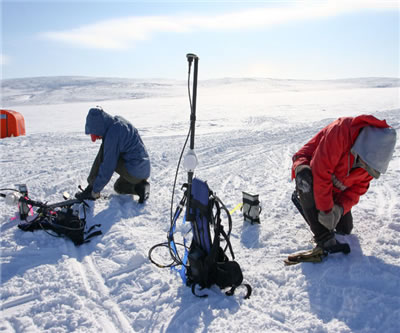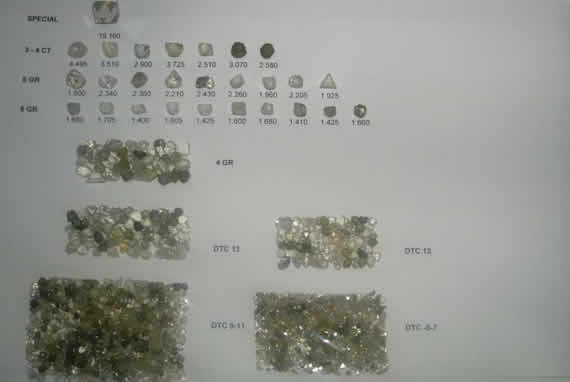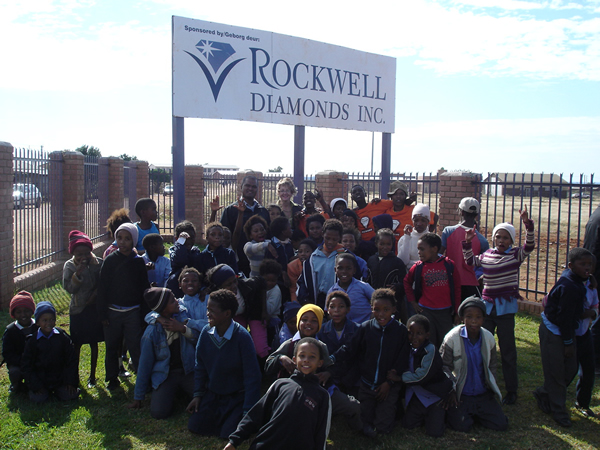Investors interested in the diamond junior sector should set out with an awareness of three key facts: the process of taking a mine from exploration to production is long, expensive and has an extremely low success rate.
But those who select the right companies at the right times can reap rewards that are worth the risks. Making such selections is best done with an understanding of exploration, a diamond junior’s first step on the path to production.
The journey from prospecting to production can take six to 10 years, according to a diamond industry report5 from Bain & Company. For a greenfields exploration project, the probability of finding a commercially viable diamond deposit is about 1 to 3 percent, the report also states.
Few companies set out with the aim of making new discoveries. Those that do are the riskiest plays. It is more common to find diamond juniors pursuing projects in areas that have already been identified as likely to have diamonds. Some companies employ a strategy of exploring near-existing mines, but even that is not a fail-proof plan.
Diamond exploration process
Most diamonds are produced from kimberlites. The initial exploration process begins with a company trying to identify drill targets that will reveal an economic pipe. That is when geophysical work, such as soil sampling, till sampling, airborne electromagnetic surveys and gravity surveying, comes in.
Once a prospective target is found, there is always the risk that what lies below the surface is not a kimberlite. There is also the risk that the kimberlite may be barren. In either case, there is no hope of a reward and the company would need to pursue another target.
As DiaMine Explorations points out7, the discovery of a kimberlite pipe is significant and generally gives the share price of the finder company a short-term boost.

Still, in reality, a company that finds a kimberlite pipe remains in the early stages of exploration. DiaMine adds that given the long odds, the long exploration cycle and the fact that pipes can range in value from nil to billions of dollars, investors should expect a roller coaster ride with several peaks and valleys over several years.
If a company finds a kimberlite, it must determine if the pipe contains diamonds and, if so, whether they occur in an economic concentration. The amount and size of any diamonds revealed in the microdiamond results will help the company begin to answer these questions.
Mini-bulk sampling is usually the next step and provides information with which the deposit can be graded. That is followed by bulk sampling to assess the value of the diamonds in the ground. Each of these stages requires more gathering of material for sampling and thus further costs.
Diamond grade
While the process outlined above may sound straightforward, in truth, diamond mining is not as simple as discovering some diamonds in an initial sample and building a mine. Geology and diamond distribution can vary, so it is necessary to make sure that the overall sampling is representative of the deposit as a whole, not just a small portion.
Both grade and value must be considered in determining whether a deposit is economic.
Diamond grade has been the curse of diamond explorers, John Kaiser of Kaiser Research told the Investing News Network in a January interview8. The value of a deposit resides in its population of diamonds, and there can be a different types of diamonds as well as subpopulations of diamonds, he said.
He explained that Peregrine Diamonds (TSX:PGD9) is currently facing a population issue. “We think they have good diamonds in CH6 and CH7 [kimberlites], but we don’t have enough carats to be sure,” he said.
“You have no idea until you collect a parcel of 200 to 500 carats in order to value them. That’s like stage four of the exploration cycle. You’ll already have spent $5 or $8 million to get there,” he continued.
“Because one diamond mine is not the same as another, you cannot just assume you have the same quality of diamonds. So even if you have 50 carats per hundred tons (cpht) all of those diamonds could be rubbish,” said William Lamb10, CEO and president of Lucara Diamond11 (TSX:LUC12) in an interview with Diamond Investing News.
Diamond value
And grade is only one part of the equation — value is another.
Overall, a company needs to make sure it has sampled the major geological rock types and recovered 3,000 carats per rock type, James Campbell, president and CEO of Rockwell Diamonds (TSX:RDI13,OTCBB:RDIAF), told Diamond Investing News.

Investors must also understand that economics are affected by location.
For example, consider two diamond mines, one with a significantly higher grade than the second. The first may produce 3 carats per ton at a value of $100 per carat for a value equal to $300 per ton.
The second mine may produce about 2 cpht, which indicates a drastically lower-grade deposit. However, if its diamonds are valued at $2,000 per carat, that works out to about $40 per ton.
Initially, it may seem that the higher-grade mine with the lower-valued diamonds has the brightest prospects, but that is not necessarily the case. Both of these mines can be economic depending on where they are. It is much more expensive to operate in Canada than in Southern Africa, where the second mine’s economics could be very well suited, Lamb explained.
“You must look at value per ton versus cost to produce,” he said.
Many people are aware that there are two major categories of diamonds: industrial and gem quality. What investors often fail to understand is that attempting to sell industrial-quality diamonds, known as bort, after planning to recover gem-quality diamonds does not provide an economic cushion.
Bort sells for about $2 per carat. Lamb said that even a miner with 50 cpht could not make a deposit economic on that basis because the cost of processing the diamonds would come to more than the worth of the diamonds.
For further perspective, the Bain report states that slightly over 50 percent of the volume of diamonds mined become gemstones for jewelry, yet jewelry-grade diamonds account for 95 percent of the total value of diamonds sold.
If a company makes it through the bulk-sampling phase with a promising project, the next phase is generally the engineering process, during which conceptual studies, prefeasibility studies and feasibility studies are completed.
Exploration funding can be a struggle
Rockwell Diamonds has two operating mines and another that it is in the process of commissioning. Campbell explained that Rockwell uses the profits generated from those mines to explore and evaluate properties where it already has mining or exploration rights and access to the land.
Rockwell does not have to go out a raise money for exploration, but not all companies are so fortunate.

Campbell was with De Beers when it began exploration on what is now Lucara’s Karowe mine. He then worked on the project when it was in African Diamond’s portfolio.
“The process of taking Karowe from exploration to the final feasibility study was a little under $10 million, which is a large amount for a junior. That number could easily be five or 10 times more in Canada,” he said.
Very rarely can diamond juniors take a project all the way to fruition, he commented. “At the end of the day, smaller companies are generally bought out by companies with a larger checkbook, just as African Diamond was purchased by Lucara Diamond, which is part of the deep-pocket Lundin Group.”
Some companies also fail. Kaiser said that 20 years ago there were 200 companies looking for diamonds. Now there are about six doing so in a serious manner. Going forward, he predicts there are only going to be handful of players in the diamond exploration game.
